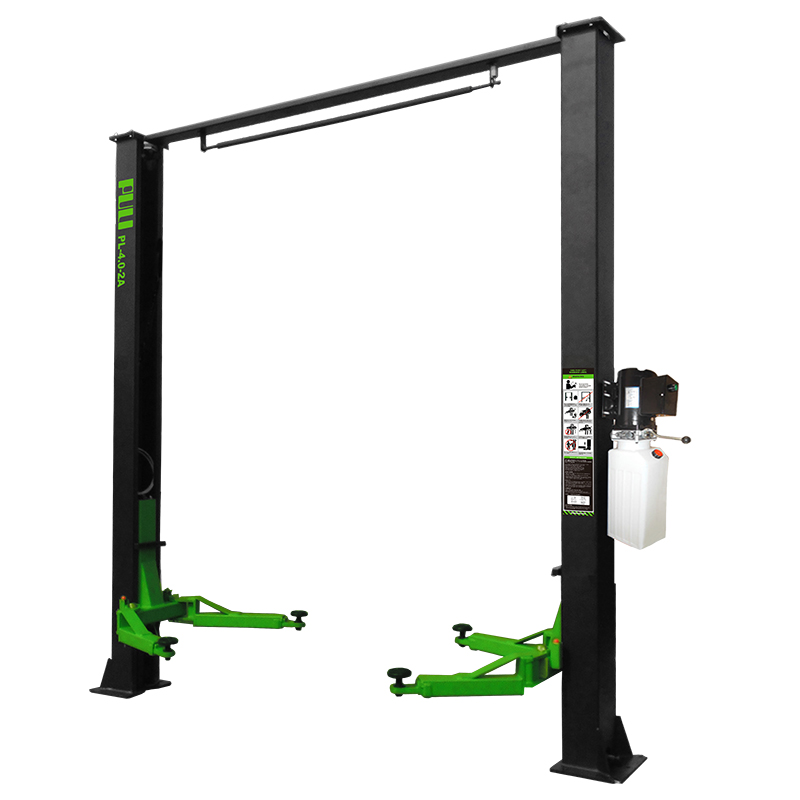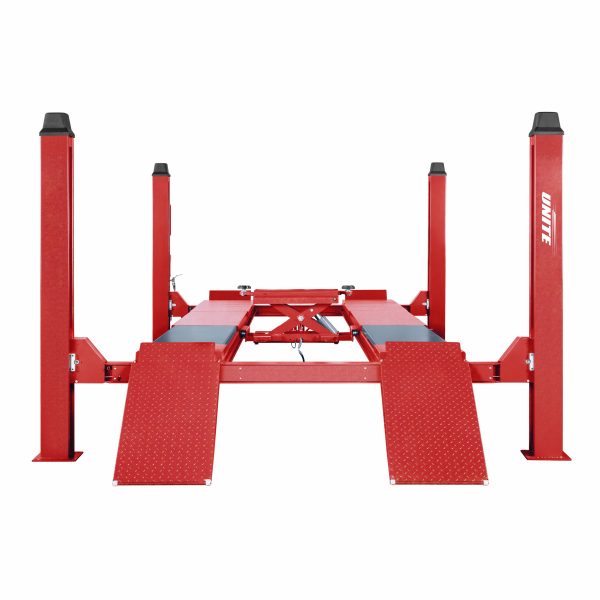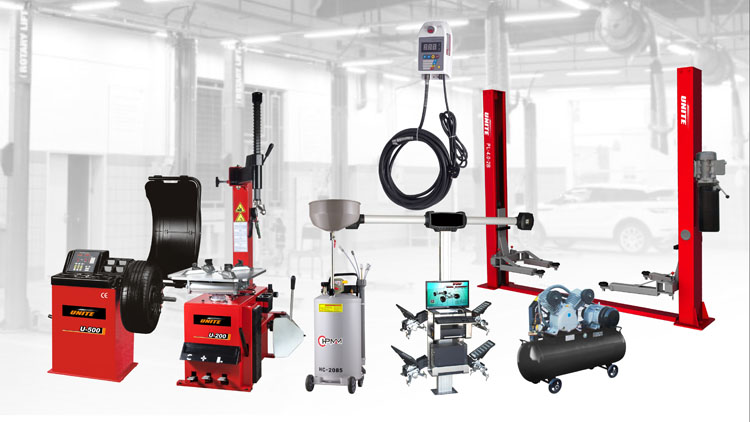With the right premises and equipment, opening an auto repair shop can be a fulfilling and profitable business.
Ready to Open an Auto Repair Shop?
Starting your own automotive repair shop or workshop is the dream of good mechanics everywhere. I have lived that dream.
If you are a highly skilled and versatile mechanic, you may find it to be very restricting working for someone else when you could be running your own business and making real money at the same time. If you love what you do and want to do it for yourself, I say go for it!
What Do You Need to Open Your Own Shop?
In addition to having the proper premises, the right equipment is essential to opening an auto shop. (I cover both of these topics in depth below.) It takes a good knowledge of workshop equipment to make all the right decisions, and you also need to learn how to use and maintain different equipment correctly.
A good automotive equipment company will ensure you have all owner’s and parts manuals as well as service directives for all the heavy equipment you purchase or lease.
The company should also be capable of providing any training necessary to operate each machine safely. Most will do so for free and on-site.
Don’t Forget People Skills and Customer Service!
People skills are paramount in this business. A caring, helpful personality as well as a love for your job are prerequisites when starting an auto repair shop the right way.
If you care about your work, customers will care about using your workshop to do all their mechanical repairs and servicing, so plan on having the right tools and equipment to do a broad range of services. At the bottom of this article, I’ve also included a list of services that I have found to be most profitable.

How Much Does Opening an Auto Repair Shop Cost?
In western countries, between $20,000 and $100,000 is the usual cost range for setting up a small shop to a larger operation with 4 lifts. You will need some cash for setting up the building lease, painting your floor, signwriting, etc., and buying or leasing equipment.
You will already have heaps of enthusiasm, talent and skills to do the work. Now you need the patience to learn about setting up with the right machinery and equipment.
Having said that, I started my first workshop out of a rickety old shed at home that could hardly hold one car. I know of others who have done the same. Like most things, it depends on how badly you want it!
What Services Should You Offer?
The more markets you can cover, the better, so having a wide range of profit centres provides better turnover and more profit safety (providing you do not spend more on machinery than you should for your market size).
Frankly, I always go after providing a wide range of services and free advice to keep customers in my shop rather than having to send them elsewhere to have their air-conditioning recharged, their discs skimmed, or their wheels aligned, etc.
Taking alignment work and then outsourcing it is time-consuming and provides only a small profit. It also takes time to deliver and pick up your customer’s car from the alignment center.
You can now do alignments without a 4-post hoist using up a lot of space. The best of this equipment is expensive, though, so I suggest leasing your equipment if you have a good credit history.
Setting Up Your Workshop Premises
In order for your workshop to function smoothly, the building needs to have the following features.
Wide and Deep Access
Customer’s cars need room to drive in and out straight to get on and off hoists. Unless the building is very deep, there will be no room to align the vehicle with the hoist if access is too narrow.
What if space is very limited? If this is the case, you can use rolling jacks that sit under the tire to maneuver the vehicle by hand. These are quick and easy to use. If your floor is in good condition, the vehicle will roll sideways, backward or forward with just a gentle push.
High Ceilings and a Solid 6″ Floor
- To accommodate the latest clear-floor hoists you need close to 15′ from floor to ceiling.
- A 6″ concrete, steel-reinforced floor is required to solidly mount the hoists onto.
Enough Space and Facilities
The workshop floor area needs to accommodate at least 2 hoists (if specialising).
You may consider scaling up to 4–6 hoists (typically the sweet spot for general mechanical repairs and servicing) when you have become comfortable with finding quality mechanics to work for you.
Remember to ensure the building is deep enough so you can back each car off the hoist inside the building.
The reception area, office, toilets and lunchroom need not be big, but should be neat and comfortable for both workers and customers. A water fountain is a good idea in both the reception area and lunchroom.
Good Natural Light
A good natural light source is a huge advantage to your mechanics, especially for examining stains on cylinder blocks left from fluid leaks and other hard-to-see indicators of underlying faults.
A tiny split or damage to a hose could—if left unnoticed—result in engine or gearbox damage (engineered components like wheel bearings, crankshafts etc. where metal surface condition is the first indicator of part failure). All these important visual signs require good natural light.
Good lighting is still one of the major factors missed in many auto repair shops. I have insisted on good natural light in all my workshop buildings, and in my experience, better-informed and more experienced mechanics will all insist on natural light. Take my word for it and thank me later. As far as I am concerned, this is essential to good engineering, and I want the best for my customer!
A Properly Painted Floor
The workshop floor is very, very important—more so than in most businesses, as it must withstand stains from dirty things and hot oil. It happens that spills do occur when doing oil changes, but more about how to stop that happening later.
Before you move your hoists in, you need to know that the floor is level, thick, strong and—most importantly—treated or painted so that the oil does not soak into the concrete and weaken it, especially around the hoist uprights.
Ensure the painted floor surface is skid-proof and smooth to roll equipment on. You can do this by using non-skid paint that can be rolled on or sprayed.
Permits, Oil and Fluid Systems, Drains, Etc.
In most countries, states and territories, there are regulations and zones dictating where you can put a workshop. Here are a few things to consider, though you should research regulations in your particular area.
- Inspect the zoning on any property you consider leasing or buying.
- Ensure you have correct drainage installed in case of large oil spills.
- Ensure that you can store volatile chemicals associated with your trade.
- Ensure you are able to operate all your machinery legally.
- The electricity supply for much workshop equipment is 400-volt 3-phase; ensure it is connected and working properly. Often you will find 3-phase wiring with the polarity changed from plug to plug—this is a darn nuisance and confuses a lot of workshop equipment!
- Install air hoses overhead. You don’t want air hoses running across the floor, in the old days, grease was run this way too. If you are working on older cars with grease points, install grease overhead as well.
- Run an overhead waterline if you feel you’ll need it for some special jobs you may do.
- Power points should be well above bench level so they do not get knocked, and you’ll need plenty of them even for a basic workshop.
- Buy and maintain an emergency spill kit.
- Fit fire extinguishers to a well-constructed plan, ensuring they will be quick and easy to reach.

This four-post vehicle hoist is a four-ton with a sliding jacking beam and wheel alignment pads.
Auto Repair Shop Equipment List
The following list is fairly in-depth, but not exhaustive. Make sure that you take your market and any special services you plan on offering into consideration, as well as your area’s regulations.
Hoists
I spent two years rebuilding, installing, and servicing hoists. The average lifespan of a cheap hoist is around two years before downtime and major repairs. Despite what your equipment supplier says, cheap hoists are dangerous, and when they need rebuilding, parts are often not available. Never even consider buying a cheap hoist!
The type of hoists you choose is extremely important, as it depends on what work you will be doing most, but at least one hoist should be a clear-span or clear-floor design.
Why Should You Get a Clear-Floor Hoist?
A clear-span or clear-floor hoist simply has nothing on the floor connecting the two sides of the hoist together.
- If you are removing and replacing components or even doing oil changes, having a clear floor to wheel your equipment around on is safer by a mile. It’s also a lot easier to avoid spills or gearboxes falling off the gearbox hoist from hitting the obstruction which is on all other types of auto hoists.
- If you are doing suspension replacements and repairs, you will need a four-post hoist with an inbuilt hydraulic ram for lifting the wheels off the hoist.
- The same hoist should be ordered with rotating wheel alignment plates built in if doing wheel alignments as well.
Hoist Recommendations
- 2-post symmetric hoist 4-ton capacity (SUVs, light trucks, and vans)
- 2-post asymmetric 4-ton capacity
- 4-post standard hoist, preferably with one jacking beam, or…
- 4-post alignment hoist with turntable inserts, cover plates, long approach ramp, and 2X jacking beams if you want to include wheel alignment in your workshop.
- Belly lift (quick, small, portable, and fast where you want all four wheels off the ground in a hurry to change wheels, brakes, wheel bearings, etc.)
- Motorcycle lift (necessary for motorcycle engine rebuilds)
Basic Mechanic’s Tools
- Hand tools (such as circlip pliers, bearing pullers, micrometers, dial gauges, tachometers, tap and die sets, and ring and open-end spanners). These will vary depending on what you work on but need to be in complete sets. A full range of inside and outside circlip pliers is essential.
- Hand-held mechanics lamps, air guns and lines, rolling oil pans, cooling fluid pans etc. You’ll need one set for each hoist.
- A minimum of two high-quality vices.
- Simple pipe bender
- Pedestal drill
- Air tools
- Brake lathe (off-car and on-car, plus accessories)
- An Ammco 4000
- An Ammco brake lathe (which can last decades with proper care)
- Tyre changer with an assist (you’ll also want a tire-pressure gauge, an air pressure regulator, a tyre lever, a tire-lever protector, and other accessories)
- Wheel balancer (plus accessories and wheel-weight pliers)
- Wheel aligner and wheel ramps
- Cooling system tester
- Engine analyser (I’d personally choose a 5-gas suitcase-type)
General Workshop Machinery and Equipment
| Hose reel | Sockets | Angle grinder |
| Bench grinder | Under-hoist drainers | Creeper |
| Compressor | Parts washer | Safety light |
| Grease kit | Pedestal drill | Radiator drainer |
| Oil drainage pump | Pressure washer | Filter crusher |
| Oil extractor | Engine crane, trolley and stand | Oscilloscope |
| Jacks (bottle, vehicle positioning, axle, trolley, racing, long-stroke, transmission, etc.) | Vacuum cleaner | Impact wrench |
| Press | Welding equipment | Air cutter |
| Wheel stands | Wheel dolly | Hand drill |
| Axle stands | Work trolley | Porta power |
| Ratchet and ratchet wrench | Mechanics’ work seat | Car dolly |
| Oil/water separator | AC leak detector | — |
Speciality Workshop Machinery and Equipment
| Flywheel grinder | Spring compressor |
| Dynamometer | Brake drum handler |
| Metal lathe | Hydraulic gear puller |
| Injector cleaner | Hub tamer |
| Body repair kit | Tyre spreader |
| Pulling ram kit | Cooling system pressure tester |
| Body straightening kit | Fuel injection test kit |
| Sandblasting cabinet | Pressure brake bleeder |
| — | Brake fluid tester |
Electronic Test Equipment
- Battery
- Jump starter/ Tester/Charger
- Multi-meter
- Test light
- Armature growler
Safety Equipment
- Goggles
- Ear protection
- First aid kit
- Fire extinguishers
- Spill kit
- Signage
- Oscillating fan
- Exhaust extraction reel
Servicing and Installations
- Hoist maintenance/ Electrician/Installation
- Lighting design
- Electrical equipment testing and tagging
- Machinery repair and maintenance
Other Equipment
To work on modern cars, you need a good scanner and a 5 gas analyser, along with many wiring harnesses interface cables for the different makes and models connections to the scanner.
None of this equipment is cheap, because quality is paramount. I have sold, repaired and serviced both cheap and well-designed and built ones. The cheapies will save you a grand or so, but you will regret buying either a scanner or 5 gas analyser cheap!
The equipment for doing petroleum/gas conversions is not usually extensive or expensive.
If you intend to get a licence to test cars for roadworthiness, you will also need quite a bit more equipment. Note that this licence has different names in some countries and that the required equipment varies from state to state and country to country.
- Headlight aimer
- Large vernier calypers
- Compression tester
- Gas analyser
What Are the Profit Centres of an Auto Repair Shop?
A workshop that can do everything in-house will attract more customers. If you cannot do a job because you do not have the necessary equipment or machinery, you need to outsource it.
Never send your customer away; always have a solution by using other specialists to do the work for you, then check it thoroughly when it is finished to add value.
Here are some ways to make your workshop more profitable.
- Buy a high-quality brake lathe and learn how to use it. Your equipment supplier should be able to train you or your mechanic in using the equipment they sell.
- Good disc machining is a matter of tooling up carefully and finishing the surfacing with a fine skim after the cut if needed.
- Do air-conditioning repairs with a multi-unit that does the whole job.
- Do tyre changing and wheel balancing, and combine with tire sales, or outsource tires. Buy a machine that will do new cars with large wheels.
- Do wheel alignment. The equipment for this is expensive to buy, as you need an alignment machine and an alignment hoist like the 4-post listed above. The profit on wheel alignment is not great generally, but it does attract other sales very well.
- Perform LPG (liquid petroleum gas) conversions. If you have all the equipment needed, such as a 5 gas analyzer and a gas fitter’s license, there is good money in conversions. Take your time with the re-tuning and calibration.
This article is accurate and true to the best of the author’s knowledge. Content is for informational or entertainment purposes only and does not substitute for personal counsel or professional advice in business, financial, legal, or technical matters.© 2010 earnestshub

